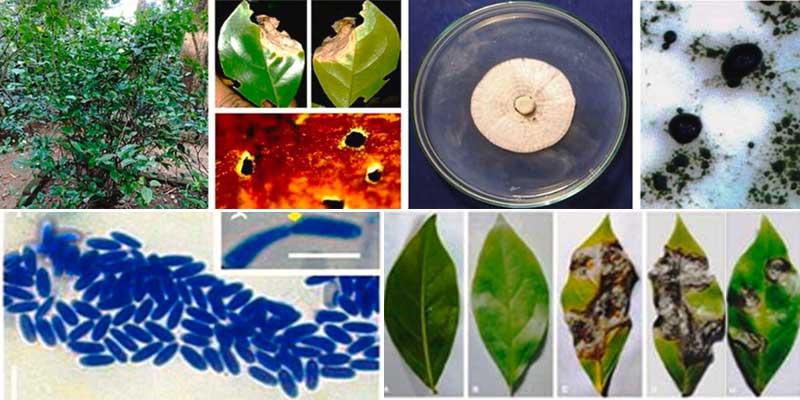

In a notable breakthrough, a team of scientists from the Kerala Forest Research Institute (KFRI), Banaras Hindu University (BHU), and the Botanical Survey of India (BSI) has discovered a new species of phytopathogenic fungus in Kerala. Named Paramyrothecium travancorense, this fungus was found infecting the leaves of Coffea travancorensis, a rare wild coffee plant, in the medicinal plant garden of KFRI, located near the Peechi-Vazhani Wildlife Sanctuary in Thrissur district.
The discovery adds a valuable piece to the growing body of knowledge about fungal biodiversity in India, particularly in the Western Ghats region, a globally recognised biodiversity hotspot.
The newly discovered fungus was identified during an exploratory survey in December 2021, aimed at documenting foliicolous (leaf-dwelling) fungi in Kerala. Scientists observed symptoms of severe leaf spots and blights on Coffea travancorensis, a plant known not only for its rarity but also for its medicinal properties, including anti-inflammatory, antimicrobial, and neuroprotective effects. About 20% of the plants across a 0.6-hectare area were affected.
Infected leaves were collected and subjected to isolation using standard tissue culture methods. The fungus was cultured and purified on PDA (Potato Dextrose Agar) medium for further analysis.
Through a polyphasic approach, involving both morphological examination and molecular analysis, researchers confirmed the identity of the new fungus. Sequencing of multiple genetic markers, including the ITS, LSU, and tub2 regions, along with morphological and cultural observations, confirmed that the fungus belonged to the genus Paramyrothecium. Phylogenetic analysis revealed that P. travancorense forms a distinct evolutionary clade, separate from its closest relatives, P. roridum and P. breviseta. Morphologically, it differs by having longer conidiophores and conidia, and notably, it lacks setae, which are present in the related species. This marks the first global record of Paramyrothecium travancorense and its association as a pathogenic fungus on Coffea travancorensis.
The discovery of P. travancorense is significant on multiple fronts. First, it underscores the rich and largely unexplored mycological diversity of Kerala. The Western Ghats, with their varied forest types and favourable climate, are an ideal breeding ground for a wide range of microorganisms. This finding also emphasises the importance of sustained monitoring of plant diseases, particularly in ecologically sensitive areas.
Phytopathogenic fungi, such as Paramyrothecium, are known to cause significant agricultural losses by affecting both food and non-food crops, thereby threatening food security and livelihoods. Additionally, some species of this genus are known to produce secondary metabolites with bioherbicidal properties, indicating their potential use in environmentally friendly weed control.
Paramyrothecium, classified under the family Stachybotryaceae within the order Hypocreales and class Sordariomycetes, was previously part of the broadly defined genus Myrothecium. To date, the genus comprises 22 reported species, many of which are known to cause leaf spots on a wide range of woody and herbaceous plants. These fungi are found in diverse geographic and climatic zones worldwide, with a higher concentration in tropical and subtropical regions. Some species are also found as saprobes or endophytes, living within plant tissues in a non-pathogenic manner.
In conclusion, the identification of Paramyrothecium travancorense adds a new chapter to the study of foliar fungal pathogens and highlights Kerala’s ecological wealth. It serves as a call to action for the scientific community to intensify its efforts in conserving microbial biodiversity. At a time when ecosystems are under growing threat from climate change and habitat loss, such discoveries are critical not only for taxonomy and ecology but also for the future of agriculture and sustainable resource management.
Published on: Thursday, January 18, 2024